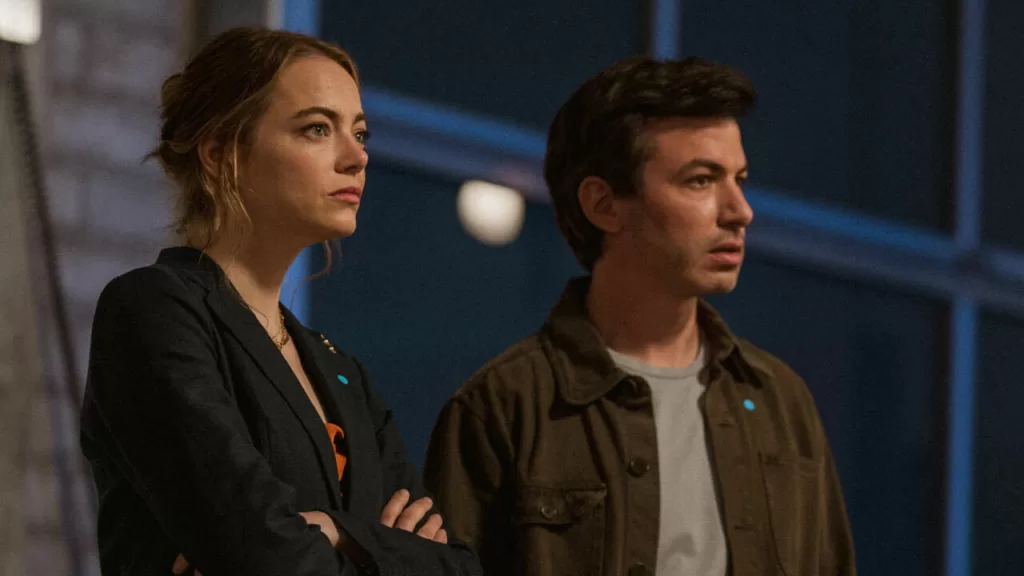The Curse recap: season 1, episode 2
There is something so revealing about Whitney Siegel (Emma Stone) casually deleting Instagram comments that accuse her of, quite rightly, aping the design of her reflective home from artist Doug Aitken only for her to then complain that such attacks bear no weight given that she’s trying to reflect community while Aiken only reflected nature. She at once understands the critique and yet regurgitates it in a way that’s self-deprecating and self-deflecting. She’s no artist, she insists. But she’s also not not an artist. She may be inspired by Aiken but she’s totally doing something wholly different. Maybe if there is such a thing. It all happens during a dinner with a local aspiring artist (Carla Durand of Nijoniya Luxy Austin). He is trying to hire her as a cultural consultant for Fripansopie in order to better cleanse her reputation, which she needs to deal with in her checkered lands. The interaction with the local indigenous tribes is…well, perfect.

Perfect as in perfectly capturing the cluelessness of affluent, privileged white folk who think they’re doing a good thing (that they’re good people, really) even as they so carelessly condescend to those they think they’re helping. Add in Stone’s careful blend of Whitney’s self-awareness and self-delusion (she’s always straddling the line between the two, often catching herself as she’s seen from the outside and calibrating her posture accordingly) and you have the kind of scene that shows why The Curse is unlike anything else on television right now. With lofty ambitions beyond the gimmicky plot its title and logline would suggest, this discomforting riff on home makeover shows has already tackled micropenises and gentrification and now sets its sights on Native exploitation and artistic appropriation. It’s a thrill to watch. And maybe only a little uncomfortable to do so. But that’s part of the point.
Pressure’s Looking Good So Far

It’s been two weeks since the Sigels arrived in La Española to film a pilot for HGTV and got into an argument with a local reporter. Asher (co-creator Nathan Fielder) has tried to kill the story by offering up a juicier one involving the local Native casino but so far he hasn’t quite delivered on his promise on actual tangible evidence that the owners are all but gladly exploiting gambling addicts. The reporter is fed up (I would be too if I had to keep meeting Asher at gas stations where he remains as wooden in his emotional response as ever).
This leads Asher down a truly bonkers rabbit hole where he has to ingratiate himself back with his former co-workers to gain access to their computer where he knows he stored the security cam that will seal the deal. His plan is, at first, simple: go, make small talk, and . I guess he hadn’t thought that much further down. So when he returns, having marveled at how so many of his ideas to optimize gambling were being used (lights, bracelets, all very high tech ways of keeping folks glued to the slots), he pitches his former boss on a new endeavor which gets swiftly shot down. It’s then he has to think on his feet: a viral video of a jogger, a bombshell of a revelation (more on that in a second), and a bottle of Gatorade end up doing the trick. He has enough time alone with the computer he needs to transfer himself the requisite files—all while mostly coming off as a socially inept guy. (Watching Asher pour Gatorade all over himself after intentionally doing so on his former co-worker after failing to accidentally soak him enough to push him out of his office plays as insane as it sounds.)

